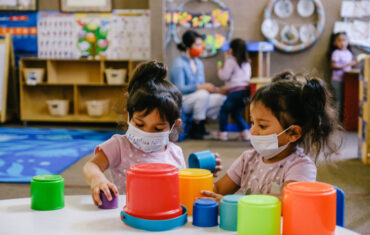Not long ago, many people wear face masks because of jobs requirements. But during the COVID-19 pandemic, many kinds of protective face masks became an increasingly common sight in public place. It is easy to confuse a surgical mask and a surgical N95 respirator. However, in fact there are many differences between them. This article may educate the reader on the differences between surgical masks and surgical N95 respirators.
1. Purpose or Intended Use
Surgical masks
They include masks labeled as surgical, laser, isolation, dental, or medical procedure masks. Surgical masks help protect the wearer against exposure to microorganisms, body fluids, and large particles in the air. However, they are not tight fitting. Besides, they likely have substantial inward leakage for particles and organisms. Manufacturers design surgical masks to cover the mouth and nose loosely but are not sized for individual fit. Besides, NIOSH (National Institute for Occupational Safety and Health) does not approve surgical masks, but FDA does.
Surgical N95 respirators
Manufacturers design surgical N95 respirators to reduce bacterias. However, they cannot eliminate the wearer’s exposure to airborne biological contaminants. N95 do not eliminate the risk of illness, disease, or death. They form a tight seal over the mouth and nose. People require fit-testing and to adjust to face to provide the intended effectiveness of filtering 95 percent of particles with a mass median diameter of 0.3 micrometers. Moreover, N95 have specific use instructions, warnings, and limitations for use in health care environments. They have NIOSH certification. They are fluid resistant to a certified level measured against a stream of artificial blood directed at the respirator.
2. Approval and Certification
Surgical masks
The U.S. Food and Drug Administration (FDA) clears surgical masks for sale in the United States. But FDA does not test and certify the respirator. Instead, they clear the respirator for sale after reviewing the manufacturer’s test data and proposed claims. The manufacturer performs and submits the results from several tests, including particle filtration efficiency, bacterial filter efficiency, fluid resistance, etc.
Surgical N95 respirators
NIOSH approves surgical N95 respirators as to their respiratory protection efficiency and resistance. Besides, the agency clears the respirator for sale after reviewing the manufacturer’s test data and proposed claims. The manufacturer also performs and submits the results from several tests, including particle filtration efficiency, bacterial filter efficiency, fluid resistance, etc.
3. Length of Wear
Surgical masks
While each facility has its own policy, surgical masks in general are discarded after each procedure. They are typically worn only for specific procedures.
Surgical N95
Users must put respirators on and take off in an area outside of the contaminated area. If not, they can expose the wearer to significant levels of hazards. Each facility has its own policy on disposal of the respirator, depending on use conditions and the type of hazard that these products are being used to protect against.






